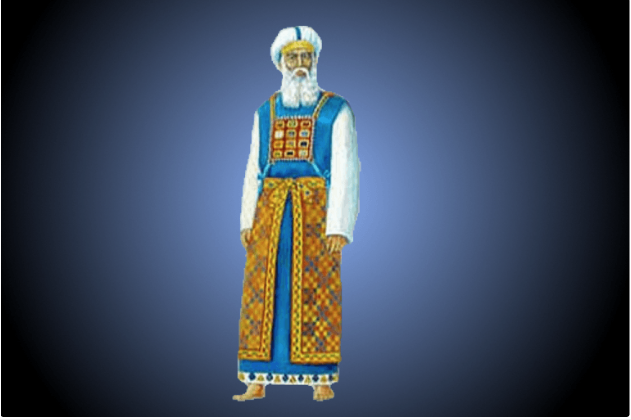Tetzaveh in a Nutshell
Exodus 27:20–30:10
G‑d tells Moses to receive from the children of Israel pure olive oil to feed the “everlasting flame” of the menorah, which Aaron is to kindle each day, “from evening till morning.”
The priestly garments, to be worn by the kohanim (priests) while serving in the Sanctuary, are described. All kohanim wore: 1) the ketonet—a full-length linen tunic; 2) michnasayim—linen breeches; 3) mitznefet or migba’at—a linen turban; 4) avnet—a long sash wound above the waist.
In addition, the kohen gadol (high priest) wore: 5) the efod—an apron-like garment made of blue-, purple- and red-dyed wool, linen and gold thread; 6) the choshen—a breastplate containing twelve precious stones inscribed with the names of the twelve tribes of Israel; 7) the me’il—a cloak of blue wool, with gold bells and decorative pomegranates on its hem; 8) the tzitz—a golden plate worn on the forehead, bearing the inscription “Holy to G‑d.”
Tetzaveh also includes G‑d’s detailed instructions for the seven-day initiation of Aaron and his four sons—Nadav, Avihu, Elazar and Itamar—into the priesthood, and for the making of the golden altar, on which the ketoret (incense) was burned.


